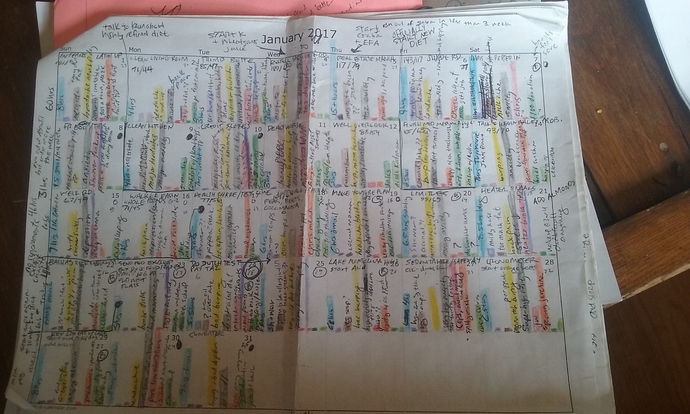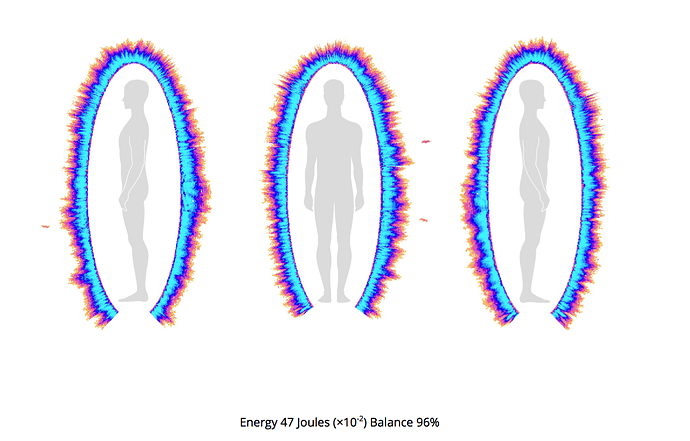Hi, my name is Emily, 34, single and looking ;). I live in central Arizona, near Sedona, but looking to move;). My interest in tracking comes from a 15+ year struggle with chronic fatigue, so you could say I specialize in health and labs, bloodwork, functional medicine, herbs and supplements etc. I’ve learned so much about it, I’m writing a small e-book to help others with choosing, acquiring, and interpreting tests, including costs.
Influences include Ben Greenfield, Joe Cohen, Jack Kruse, Dave Asprey…
I am NOT a huge tech person. I don’t record anything with my phone (gasp!) I still do most of my data with pen and paper and like it that way, but when the technology gets more advanced for compiling and correlating data to look for trends that we may miss, and when I can put in anything from anywhere, not just a few select devices or apps, I will be interested. For example if the computer can flag that most every time I eat beets I don’t sleep 2 nights afterward or other obscure patterns. I am also interested in up and coming consumer testing services and gadgets, like pills you swallow to look in your guts and machines to scan your blood/ urine/ saliva for pathogens at home.
Also interested in PEMF devices, vibrational medicine, light and energy medicine. I spent some time using a Biowell GDV camera if you have any questions about that. I ultimately sent it back because the tech support was bad and it was hard to get my questions answered about it, but it was fun while it lasted.
I AM a huge experiment person.
Some of the parameters I track daily:
-use Rescue Time to track total screen time. Not for activity reasons but for EMF exposure.
-use Cronometer to track food. Have particular interest in nutrient density, fiber, and macronutrient ratios. Currently eating only 15 foods due to food allergies, so I watch for reactions to foods. Tracking has helped me nail down a safe baseline diet that allows me to go through every day headache 100% free.
Currently investigating fat/carbs and anxiety relationship. Tracking helped me understand that low carb/high fat ketogenic causes greater insomnia and anxiety for me. Slowly working my way higher carb while lowering fat and somewhat protein.
-Use labs to track health. Have multiple CBC, CMP, vitamin D, lipid, thyroid. Currently obtaining Quicksilver blood metals, DUTCH hormones, LRA food allergy, Doctor’s Data stool, 23 & me genetics. May repeat some in future depending on results. Arizona is a direct access state, no requisition needed for anything, and basic bloodwork is cheap, which is awesome. Tracking has allowed me to see that most of my off bio-markers have been off for many years, the same ones, but I have yet to improve them or really try to target specific ones. I have some resources for functional lab ranges for conventional blood work those who are interested.
By hand I use a combination of a paper journal with spaces for notes on specific subjects daily and a paper calendar where i make my own daily bar graphs with colored pencils to see trends at a glance. It could be easily converted to numbers and transferred online if I just gave the height of the bar a number, but I also write notes all over my calendar and there is no exact software mimic for the whole layout that I am aware of . And besides, I am wary of wireless and screens. Add that to the list of tech that DOES interest me: non-toxic/low EMF/healing EMF tech.
On the calendar I track 9 main things with colored bars, including
1)computer hours
2)if i ate a suspicious food, like a known or suspected sensitivity or just something unusual
3) chemical exposure and severity and triggering because i have mild multiple chemical sensitivity.
4) daily symptoms and total symptom severity, headaches, pain, etc.
5) mood. i basically track the extent and brand of the negativity, as I am rarely in an exceptionally good mood. But hopefully some of my supplement and diet tracking and labwork will be able to turn that around.
6 and 7) good and bad synchronicities, luck, flow. I probably differ from everyone else on here in that this is one of my most important parameters. I believe strongly that consciousness/vibrations influences the events around us like the power going out, or getting surprise money. Both can happen in one day, hence separate bars.
8 and 9) good and bad dreams. I track the general tone of my dreams as I feel they add a bit of extra insight into my waking day and further underscore trends in mood, diet, flow, etc. For example last night i dreamed of snakes. That always means something is not okay in my waking life. I would give any snake dream, say, 8/10 on the bad dream scale. I also have a symbol for if I did not sleep through the night. If I start using one phone app again it will probably be a sleep motion tracker.
Other things I note on the calendar are exercise. I only hike/walk for exercise and usually in a different place each time, so each day is labelled by where I went so I can pull the whole day up in my memory easily. If I didn’t go anywhere the day is labelled by something else notable that day like today might be “Quantified Self” if I spend a lot of time researching QS stuff.
-I note if I took a bath in epsom salts with a "B’. For awhile I thought this was giving me better dreams, but not so sure anymore.
-I note ovulation and menses with a blackened or empty moon symbol. Menses and they day or two before has obvious effects on everything else, ovulation or other times of cycle not so much. But good for not getting pregnant (If I wasn’t single).
-I note if changed diet or supplements.
Sounds like a lot of stuff but it only takes 5 or 10 minutes to fill in. The calendar is my “at a glance” shorthand collator of the data from my two apps plus my journal. In my journal take notes throughout the day and I keep the more extensive observations, ruminations, to-do lists. I do write down foods in each meal on here as well as cronometer because I can’t flip through cronometer easily and see my meals on the same page as everything else that day, like…
-…bowel movements. frequency, texture. I have a lot of gut issues and do a lot of poop tracking, including bowel transit time.
CURRENT EXPERIMENTS
-watching effects of hydrocholoric acid supplementation on digestion (mostly looking at poop texture). will add enzymes when I have a good idea of what acid does or doesn’t do. The enzymes in turn were added to oxbile which didn’t do much, which in turn were added to sauerkraut which does A LOT to firm up loose stools for me (various brands work the same, probiotics on the other hand do not make a difference).
-soon starting medicinal mushrooms to see if they raise sub-optimal white blood cells on CBC.
-body temperature. Pretty much established it is optimal, but now checking into the circadian rhythm pattern.
Lots More to Come when I get my latest labwork back. Feel free to contact me if you have any questions.


